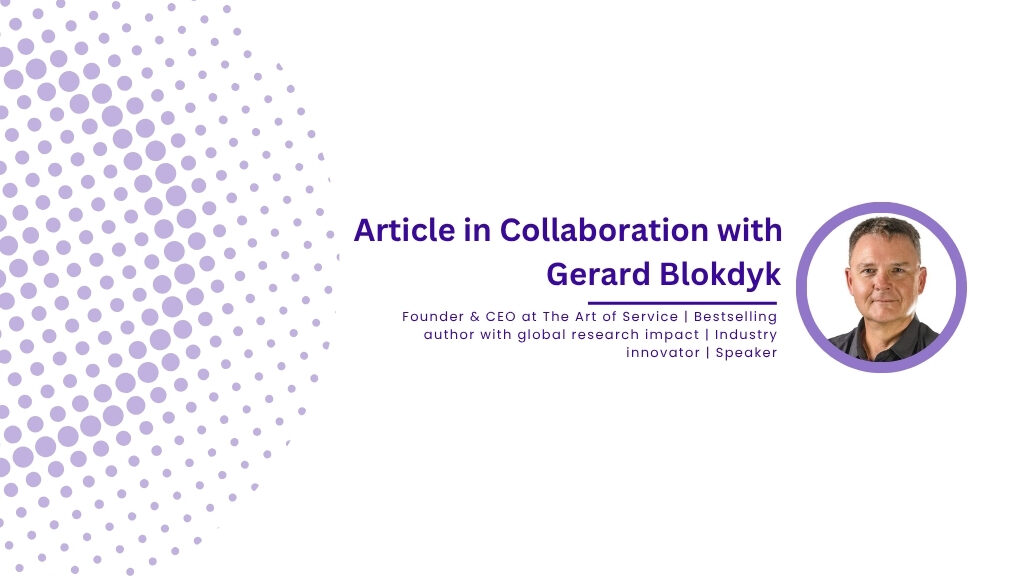
In an era where speed often trumps reflection and complexity clouds clarity, Gerard Blokdijk offers a refreshing call to structured thinking and intentional execution. As the driving force behind The Art of Service, Blokdijk brings a hands-on, systems-minded approach to decision-making and strategic alignment. His insights, shaped by years of working in high-stakes environments, serve as a blueprint for leaders navigating uncertainty and scale.
The Hidden Enemy of Good Decisions
“The biggest barrier is a combination of emotional urgency, lack of self-assessment, and cultural resistance to transparency,” Blokdijk says. It’s a sobering observation—but one many leaders recognize. Under pressure, decision-makers often default to instinct or political considerations, bypassing the disciplined work of diagnosis and evaluation.
Organizations rush to implement solutions without answering the most basic question: “What do we actually know about where we are right now?” According to Blokdijk, this oversight leads to fragmented decisions, rework, and organizational inertia.
Frameworks: Roadmaps, Not Rules
Far from advocating rigid systems, Blokdijk emphasizes flexibility within structure. “A good framework should be a roadmap, not a straitjacket,” he explains. By designing tools around questions instead of answers, his models invite context-specific thinking while maintaining a shared logic.
He builds in reflection prompts—like “What’s changed since we started?”—to ensure frameworks evolve with reality rather than dictate it. “Flexibility isn’t the absence of structure; it’s structure intelligently applied through local judgment and clear rationale.”
From Vision to Velocity
One of the most common breakdowns Blokdijk sees is the disconnect between strategy and execution. “Success shows up early in behavior before it shows up in data,” he notes. Look for engagement, role clarity, and small wins. If you’re seeing confusion or disengagement? Red flags.
To operationalize strategy, Blokdijk recommends breaking vision into 90-day blocks tied to specific metrics. But the magic happens in what he calls the “strategy operationalization layer”—where OKRs, workflows, and feedback loops converge.
“It’s about turning strategy into a living system, not a static document.”
Pitfalls to Avoid
Throughout his career, Blokdijk has observed three common organizational mistakes:
- Jumping to solutions without diagnosing the real problem.
- Overengineering at the leadership level while neglecting execution teams.
- Treating data as a reporting formality instead of a real-time decision engine.
His frameworks aim to flip this script—placing a premium on self-assessment, human-centered activation, and data that drives iteration, not just oversight.
One Question That Changes Everything
“If you could embed one question in every organization’s decision process, what would it be?” we asked.
Blokdijk’s answer was immediate: “What evidence supports this choice, and what happens if we do nothing?”
This deceptively simple prompt cuts through noise, reveals hidden assumptions, and forces both urgency and honesty. It’s a north star for any organization serious about impact.
Shaped by Pressure, Driven by Purpose
Blokdijk’s approach wasn’t born in theory—it was forged in real-world pressure. “It was during high-stakes turnarounds, where strategy had to produce outcomes fast,” he recalls. When existing tools failed to deliver clarity or alignment, he began designing his own.
That urgency became the foundation of The Art of Service, an ecosystem of tools, methods, and mindset shifts that help organizations make better decisions—by asking better questions.
Conclusion
Gerard Blokdijk doesn’t just teach structured thinking—he embodies it. In a world saturated with frameworks, his work stands out for its integrity, adaptability, and relentless focus on measurable progress. As organizations face ever-increasing complexity, the path forward may lie not in more noise, but in the disciplined clarity of asking the right questions—and acting on the answers.
